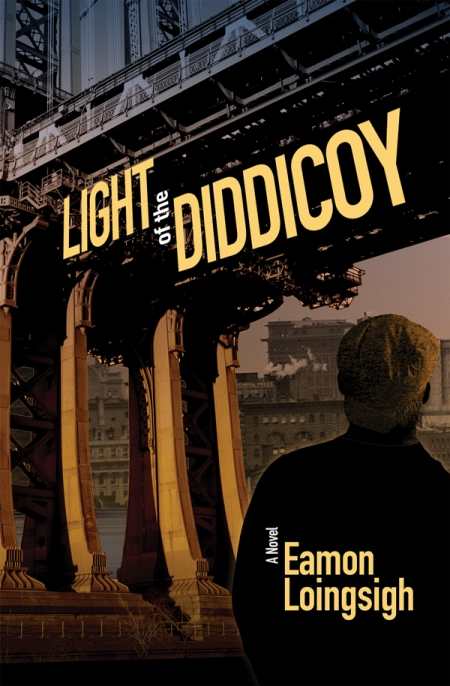Light of the Diddicoy
The dark and compelling Irish American gang lifestyle of early 1900s Brooklyn pulses through this sharp, hardboiled drama.
Eamon Loingsigh (pronounced Lynch) crafts a tale of early 20th-century Brooklyn that peers into the life of the gangs that controlled the waterfront and considers what honor is in a world where the struggle to survive requires a different moral code. The author explores the darker side of immigrant life, the mentality of gangs, and how right and wrong transforms from black and white to shades of gray.
The tale follows fourteen-year-old Liam Garrity, who travels from Ireland to America in 1916. Liam ends up on the Brooklyn waterfront among the notorious White Hand gang, where the gang leader takes him under his wing. Here, a moral code exists like no other. “Ya think this country’s here for ya? The police? The gov’ment? The business?” asks the leader. “They’re not. … The only way we can survive, caring about each other … We survive because we make survival out of it.”
Gangs, it seems, offer the only ray of hope in dark circumstances—but with a twisted view of looking out for “their own.” Illegal activities abound. Fighting and murder is expected. Hardboiled, murderous thugs bully and fight dirty to survive. Yet a kind of intense care is found within the group—if you stay within its rules. Liam must decide how far he will go for this new “family,” and he must choose what path he will take as he leaves his innocence behind.
Loingsigh’s book looks at a fascinating lifestyle drawn from his extensive research and his own family history. The plot builds and climaxes well, with tension maintained. Though the drama is constant, it allows moments of appropriate reflection. Key characters are fully dimensional.
The author’s voice in the beginning booms like that of a classic Irish storyteller by a fire: “A long time ago it was, when I was young and running.” This tone, if maintained, would have been uniquely powerful; the somewhat different voice that settles in, though, still proves strong. The writing is sharp when gangsters are involved, yet it preserves a poetic Irish heart. It speaks of “barge horns moaning like giant creatures” and winds “spinning loose papers and dust into pirouettes of refuse.” The only minor weakness occurs when the first-person point of view is occasionally broken.
Most striking is the glimpse into the draw of gang life. When it seems the only ones looking out for you do so through murder and bullying, one’s moral code turns upside down. And honor means doing what needs to be done for your own, no matter what. Compelling and insightful, Light of the Diddicoy is an interesting journey into the making of a gangster.
Reviewed by
Diane Gardner
Disclosure: This article is not an endorsement, but a review. The publisher of this book provided free copies of the book to have their book reviewed by a professional reviewer. No fee was paid by the publisher for this review. Foreword Reviews only recommends books that we love. Foreword Magazine, Inc. is disclosing this in accordance with the Federal Trade Commission’s 16 CFR, Part 255.

